The flowering and fruiting stage is an important stage that determines the yield and quality of cashew nuts. Therefore, taking care of cashew trees when flowering and fruiting requires special attention and application of appropriate techniques.
Cashew trees are an important economic crop for many farmers, particularly in the southeastern provinces of Vietnam. The flowering and fruiting stage is considered the most critical phase in a cashew tree's development, directly influencing yield and nut quality. Therefore, proper care and attention, along with suitable technical methods, are essential during this period. Below are practical tips to help you care for cashew trees effectively during their flowering and fruiting stage.
The flowering and fruiting stage is the most vital phase in the growth cycle of cashew trees, determining the yield and quality of the cashew nuts. During this stage, the tree requires a high amount of nutrients and special care to ensure uniform flowering and stable fruiting. Without proper care, the tree may face issues like early flower drop, poor fruit set, or pest attacks, leading to reduced productivity.
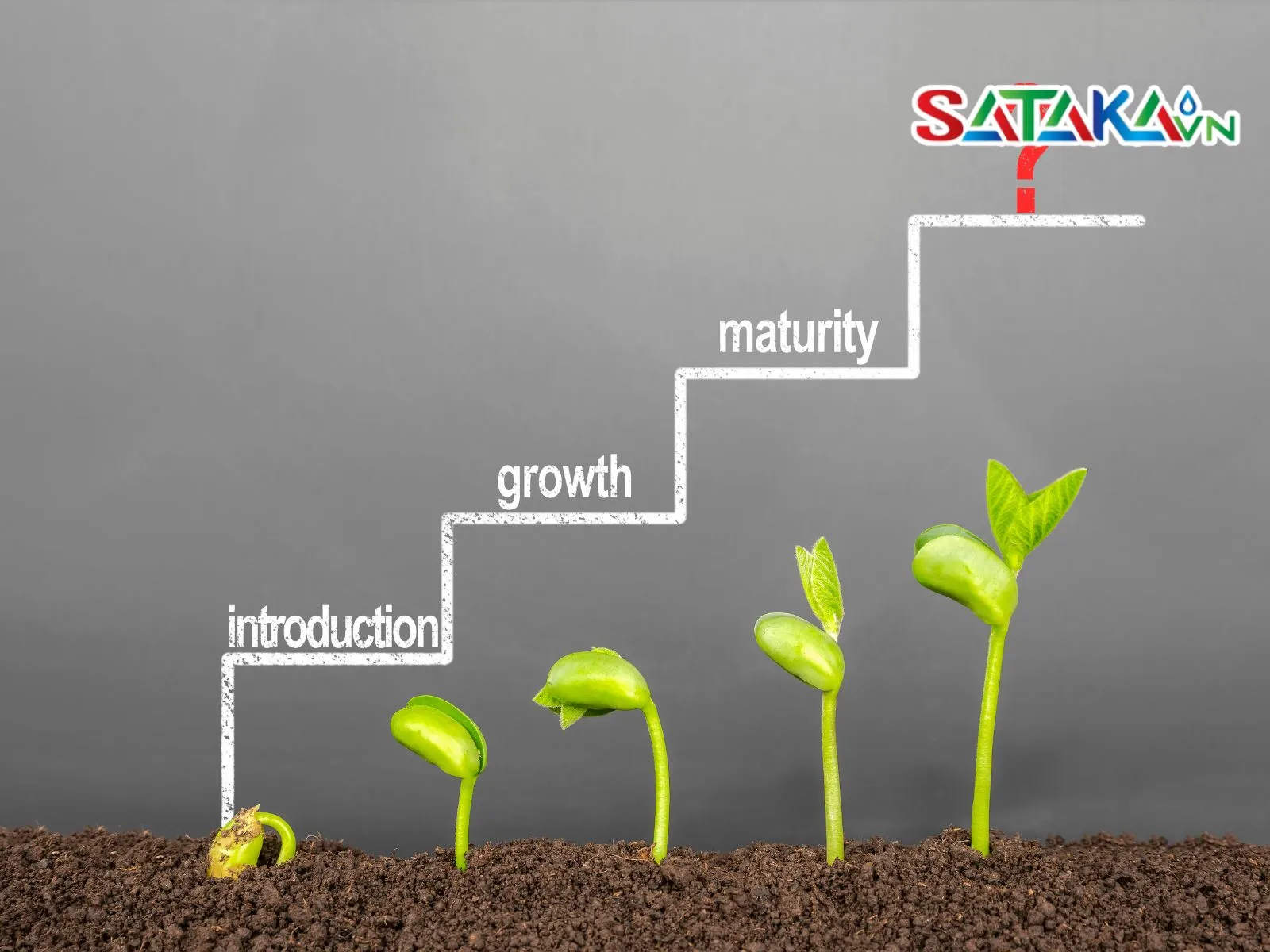
Plant growth cycle
Moreover, cashew trees are highly sensitive to environmental and weather conditions during this time. Sudden weather changes, such as heavy rain, intense heat, or strong winds, can negatively impact pollination, flowering, and fruit setting. Understanding and applying the correct care techniques are key to a successful harvest.
To ensure robust growth and optimal preparation for flowering, growers should focus on improving soil quality and providing adequate nutrients. Cashew trees require well-drained soil to avoid waterlogging, especially during the rainy season. Organic compost combined with NPK fertilizer should be applied before the flowering season to supply the necessary nutrients.
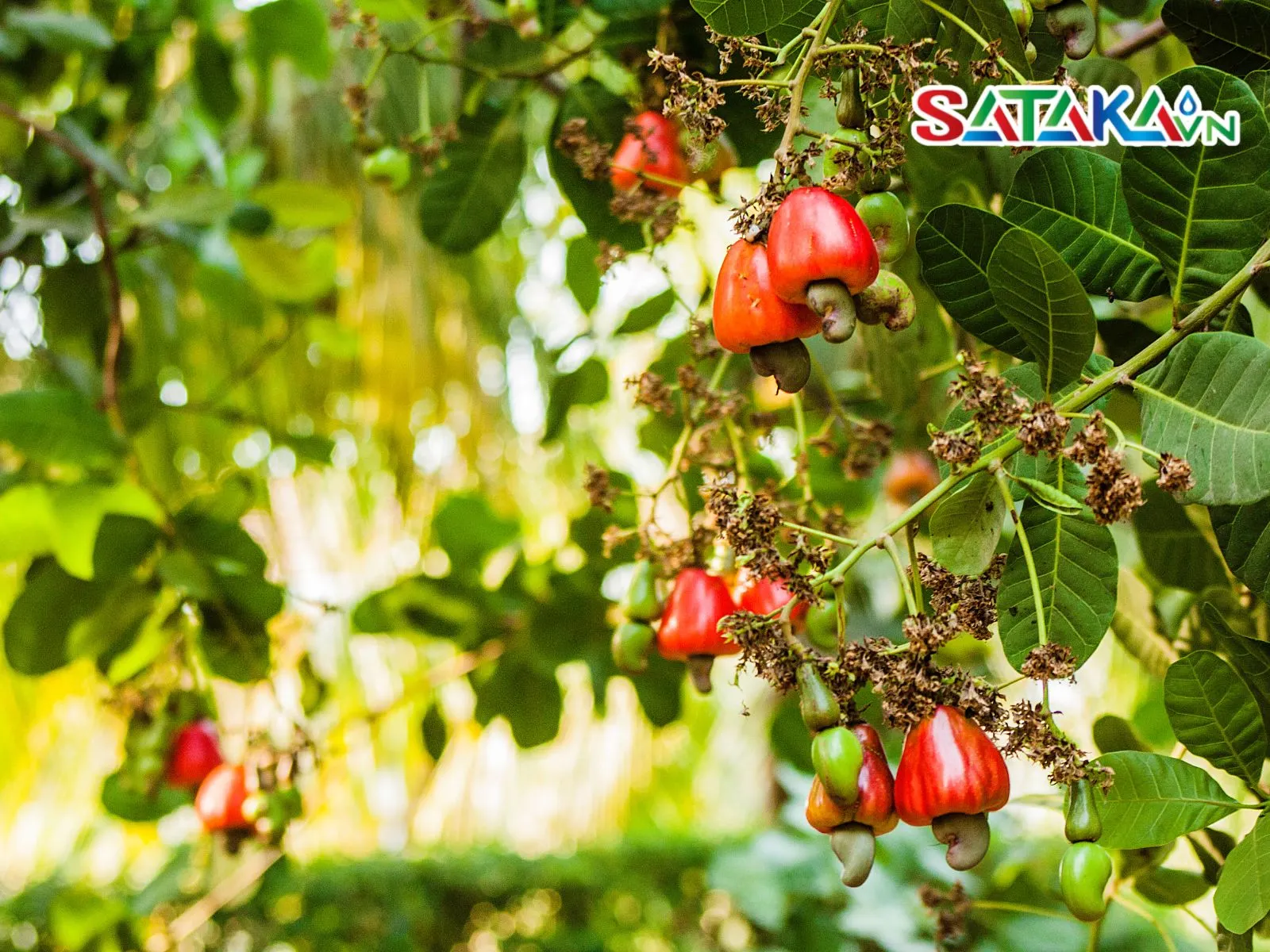
Nutritional supplement for cashew trees
Micronutrients such as calcium, magnesium, and other trace elements are also essential to enhance the tree’s resistance to harsh weather and pests during this critical stage. Experienced growers suggest that applying foliar fertilizers during the new shoot development phase can stimulate better flowering.
Watering is a critical factor in ensuring the success of the flowering and fruiting process. Both excessive and insufficient soil moisture can harm cashew trees. During this stage, it is important to maintain stable soil moisture levels to prevent the trees from wilting or becoming waterlogged.
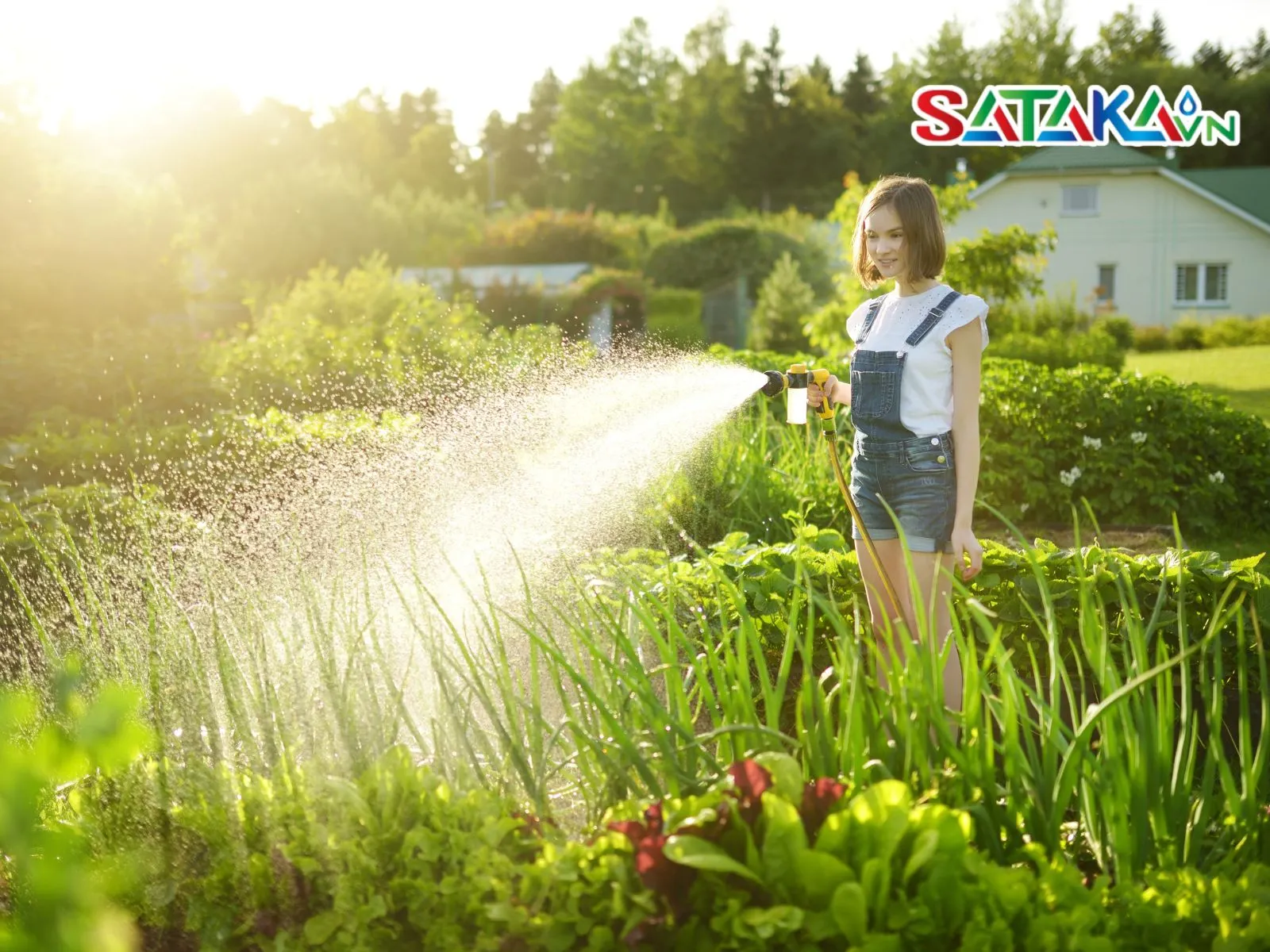
Water in the morning
Growers should water regularly but not excessively to avoid waterlogging, particularly during prolonged hot days. The best times to water are early in the morning or late in the afternoon to allow the water to penetrate deeply into the soil, ensuring better absorption by the tree. In areas with heavy rainfall, proper drainage systems should be set up to prevent root rot caused by waterlogging.
Cashew trees are prone to pests and diseases during the flowering and fruiting stage, including beetles, mealybugs, and mold, which can cause flower and fruit drop. Regular orchard inspections are crucial to detect early signs of pests or diseases and apply timely control measures.
Chemical plant protection products can be effective but must be used with care. Adhering to proper dosage and timing is essential to avoid disrupting the pollination process.

Take care and check for pests in the cashew garden
Pruning is an essential technique to promote ventilation and light penetration, ensuring a favorable environment for flowering and fruiting. It also reduces the risk of pest attacks caused by excessive humidity within the canopy.
Growers should remove dry, diseased, or overly dense branches to create space for the tree to grow. Properly shaping the cashew tree to ensure even branch distribution enhances photosynthesis and improves flowering and fruiting efficiency.
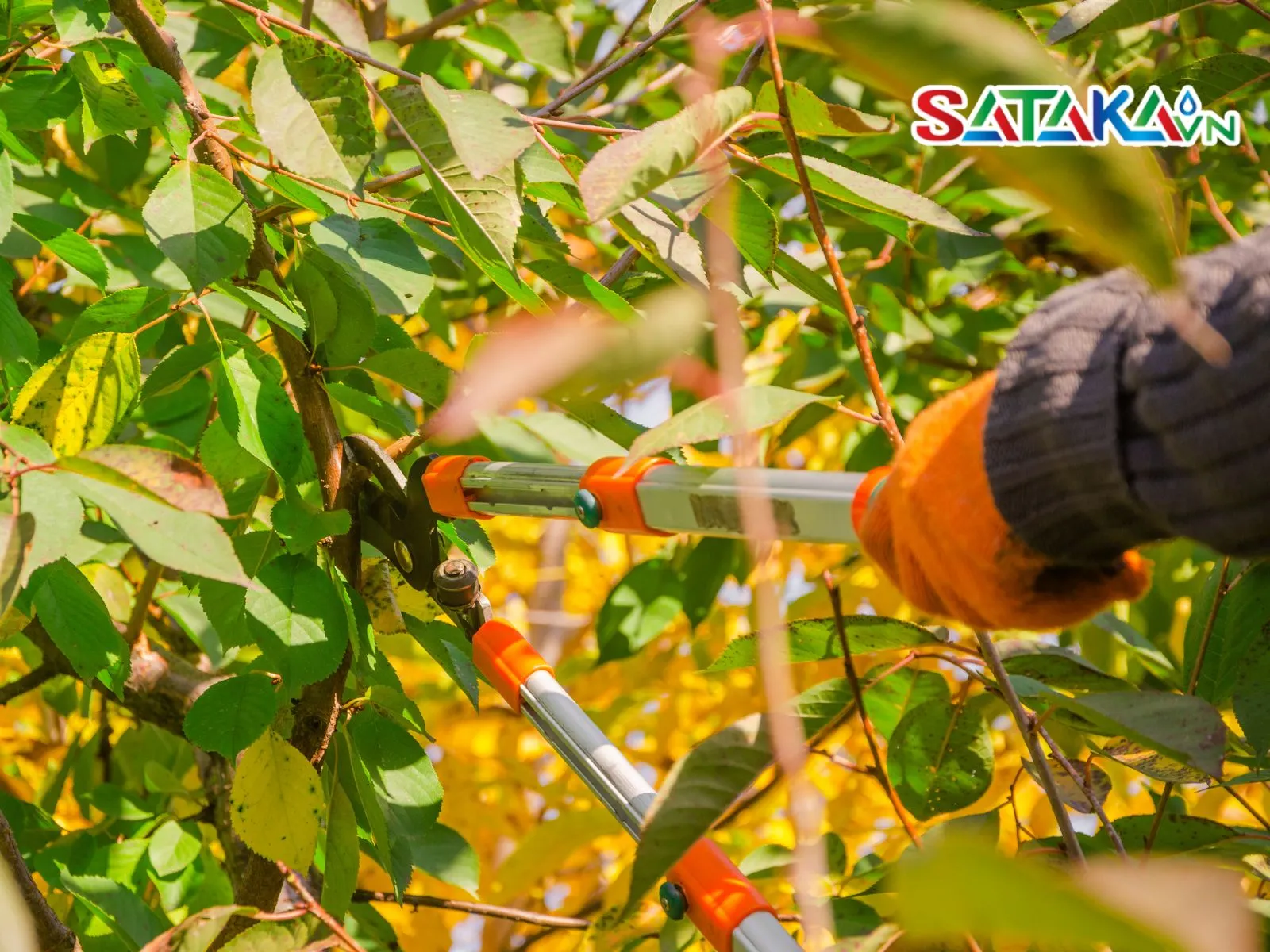
Prune out diseased branches
In natural conditions, cashew trees are primarily pollinated by insects like bees or by the wind. However, unfavorable weather conditions can hinder the pollination process, leading to a low fruit set rate.
In cases where pollinating insects are lacking, growers can resort to manual pollination to improve efficiency. Additionally, maintaining an airy orchard environment while avoiding strong winds or heavy rains during the flowering stage can enhance fruit set rates.
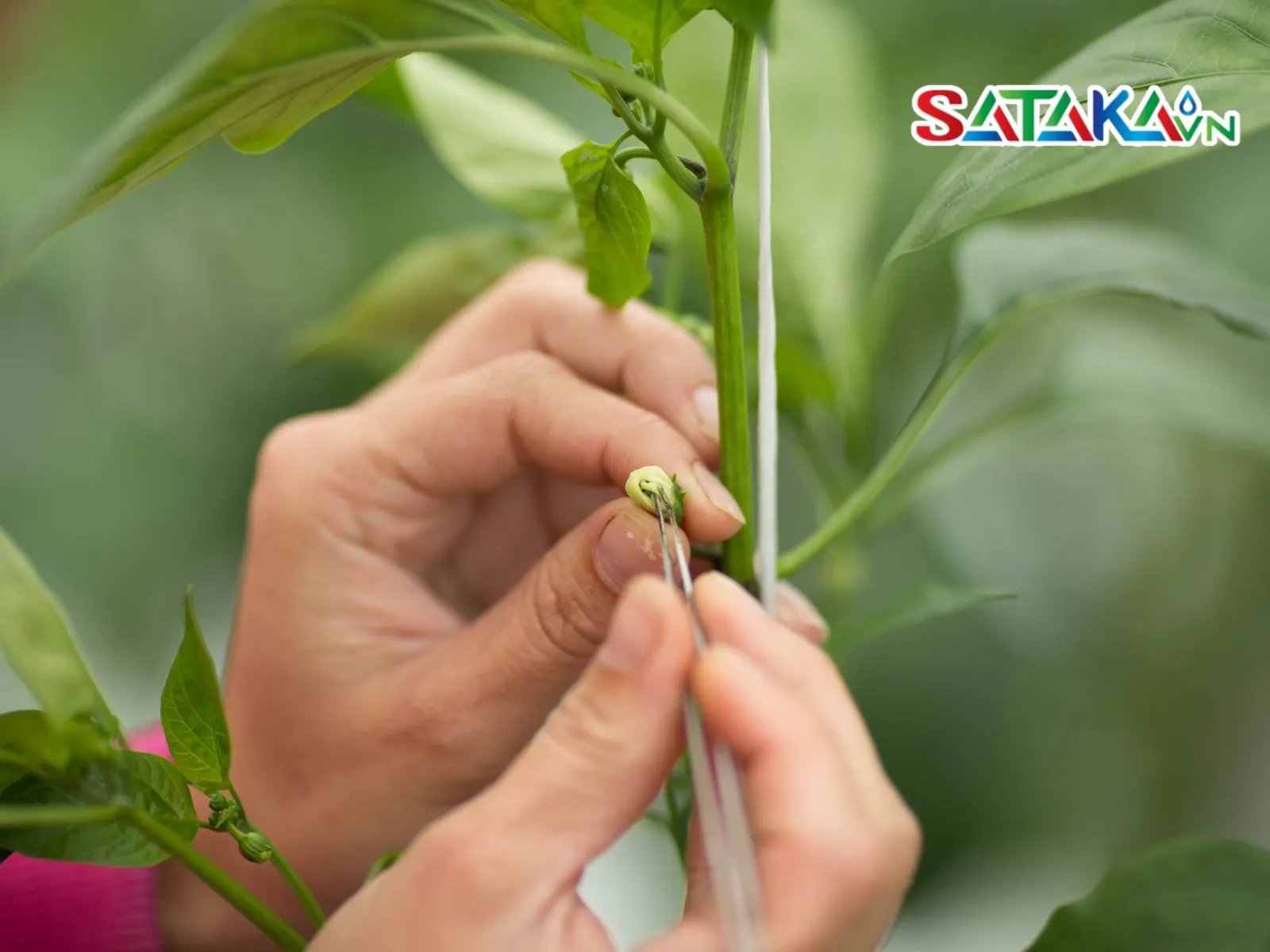
Manual pollination
Growers should harvest cashew nuts when the shells turn dark brown, indicating optimal ripeness. Harvesting too early may result in poor-quality nuts, while late harvesting can lead to losses from fruit drop.
After harvesting, cashew nuts should be dried or roasted immediately to prevent moisture and mold. This is especially important for long-term storage.
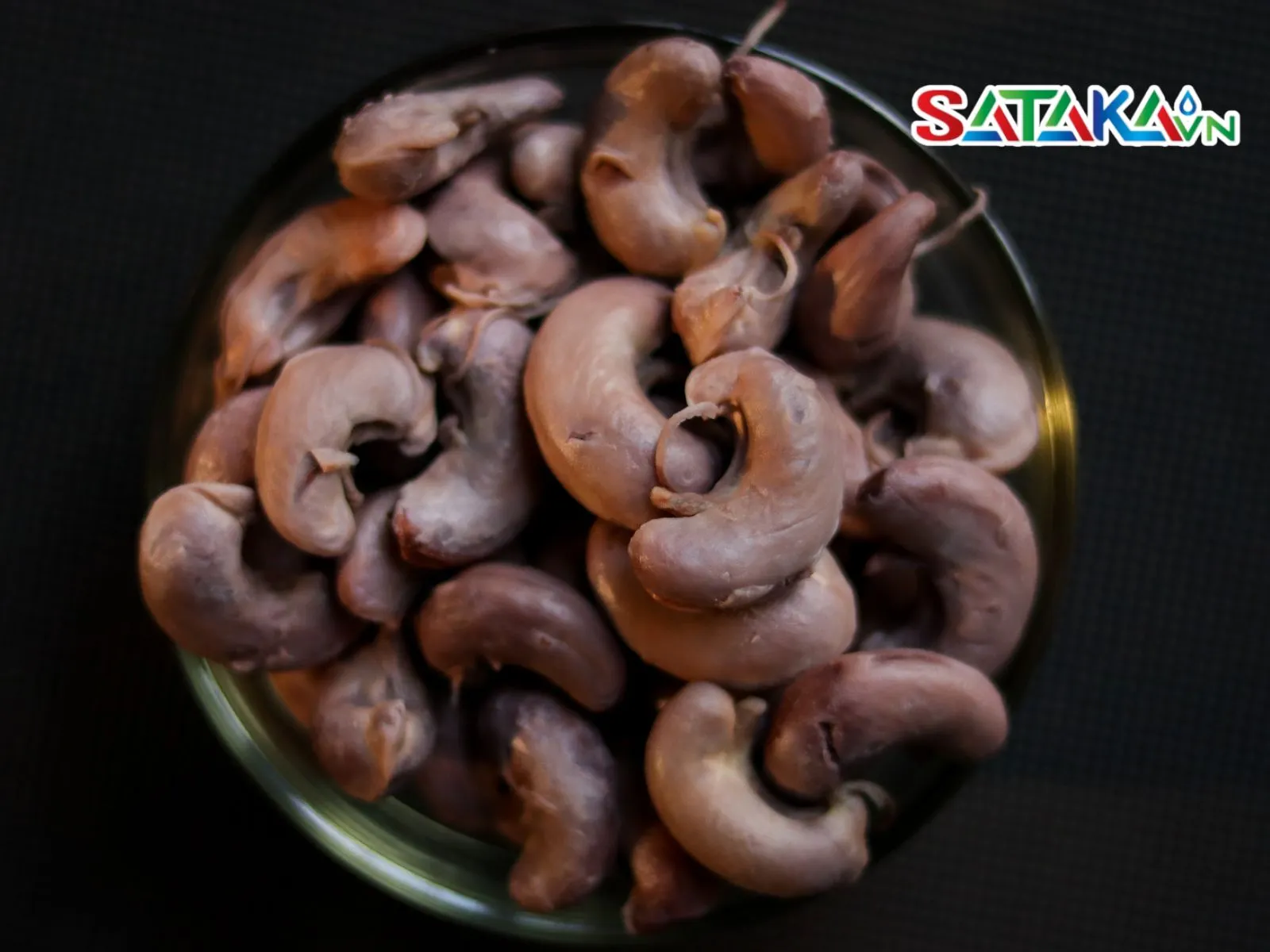
Harvest when the cashew skin turns dark brown
Some growers, especially beginners, often make mistakes during the flowering and fruiting stage of cashew tree care. These mistakes include applying fertilizers at the wrong time, irregular watering, or improper pesticide use.
A key takeaway is to apply fertilizers and water reasonably, avoiding overuse of chemical pesticides, as this can harm the tree’s development and fruiting process. Neglecting pest and disease management during this stage can also cause significant damage to the orchard.

Do not fertilize when it is sunny
This article from Sataka provides practical insights and effective measures for caring for cashew trees during the flowering and fruiting stage. By following these techniques, farmers can improve both yield and quality, ensuring a successful harvest season.